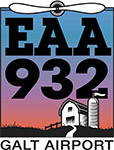When I teach my students about the right-of-way rules, I try to emphasize the point that the rules not only rely on each aircraft being aware of the other but also that at least one of them is going to take appropriate avoiding action. Whomever has the right of way is essentially irrelevant if either pilot is unaware of the other traffic, and even if you think you have the right of way do you really want to rely on the other pilot to do the right thing? If they don’t, the consequences could be catastrophic.
We can complain all we want about how other pilots should fly a “standard” traffic pattern or only enter the pattern from a 45° entry to the downwind, but the reality is we have no control over what other pilots do. We each need to focus on what we can do to ensure our own safety. Here are a few recommendations.
Be Visible
Remember to use all the lights you have on your aircraft even during daylight hours. Strobes, position lights and landing lights all significantly increase your chances of being visible to other pilots and from a greater distance than without lights. Use all of them.
Accurate Position Reporting
Make frequent traffic advisories starting from ten miles from the airport and in every leg of the traffic pattern. Make timely calls as soon as you enter each leg and don’t skip any leg unless you absolutely cannot get a break on the frequency. Remember that other pilots are making decisions based on where you say you are, so be accurate about your position and your intentions. If you make a mistake, transmit again to correct the misinformation.
Situational Awareness
In addition to looking for traffic and listening for traffic advisories, be sure you evaluate every visual target and position call for a potential conflict. If you are not sure where the other traffic is, ask them to clarify their position and intentions.
Be Flexible
Be truly prepared to adjust your pattern to maintain proper separation from other aircraft. That means getting proficient at extending your downwind leg, performing a 360° turn on the downwind and go-arounds from base or final. We must also be mentally prepared to change our plans. Pilots have a tendency to fixate on flying the perfect pattern to a landing every time but circumstances often require something different.
Be Vigilant
Embrace the reality that other aircraft of all types may be approaching or departing from a non-towered airport from any direction and at varying airspeeds. Not all traffic will fly a standard traffic pattern or follow the recommended pattern entry procedures. There are other types of approaches to look out for such as straight-in, short approach, low approach and overhead approach. Pay particular attention to traffic flying a straight-in approach and never turn from base to final if there is traffic inside a five mile final for the same runway.
Make Decisions Early
Don’t leave it to the last minute to take avoiding action. Whenever you become aware of the potential for two aircraft converging at roughly the same altitude, in any phase of flight, you should be ready to take avoiding action immediately. Never rely on the other pilot changing course even if you think you have the right of way.
No-Radio Aircraft
It is perfectly legal for aircraft not equipped with radios to fly to and from non-towered airports. However, my personal opinion is there is no good reason why a pilot shouldn’t at least use a handheld radio to improve their safety and that of other pilots. If you see traffic that is not making radio calls, make other pilots aware of their position.
It is every pilot’s responsibility to see and avoid other aircraft so let’s all work together to be vigilant and fly safely.
Beth Rehm, CFI

